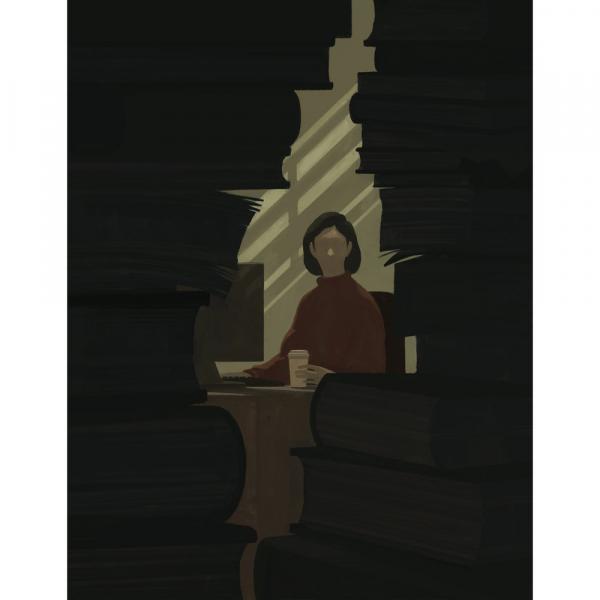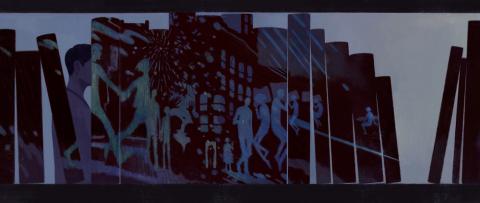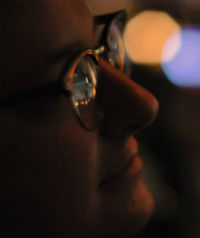When the events I relate in “Noir Girl: An Essay in Two Takes” happened to me, I was in a big transitionary period. I’d recently decided to take a break from fiction, having finished writing a 440 page novel six years in the making (at least four of which consisted of me pacing, pitching imaginary baseball games for which I supplied the commentary, and then pacing some more in various apartments and basements). I’d also already let everyone know I was leaving my tenure track job in Billings, Montana, because I just couldn’t take the isolation of Big Sky country any longer. And so, at the time, I really had no idea what I was going to write next nor did I know (exactly) where I was going to live or work the following year. My bet was I’d end up a pizza delivery guy, one of the gigs I had straight out of undergrad, but this time I’d be the doctor of pizza delivery. It didn’t turn out that way, though I did briefly end up at one of my undergrad jobs: Summit County Mosquito Control. I’m sure I’ll write about that some other time.
 As for the writing, what I really wanted to do was work on plays. Patrick and Shad Scott-Wilson’s Sacrifice Cliff Theatre in Billings had performed two of my scripts through their New Works Festival, and at different times theaters in Chicago and Los Angeles had expressed interest in my work. Unfortunately, the theater in Chicago dropped the program I was going to be part of, and the theater in Los Angeles vanished (later leading me to put in some detective work to find out what I already knew – they were gone … another case cracked by Detective Farkas … guess that Sherlock Holmes better move on over), so every time I sat down at my desk, I wondered if maybe I was just writing for the drawer like the old Soviet authors who weren’t interested in socialist realism.
As for the writing, what I really wanted to do was work on plays. Patrick and Shad Scott-Wilson’s Sacrifice Cliff Theatre in Billings had performed two of my scripts through their New Works Festival, and at different times theaters in Chicago and Los Angeles had expressed interest in my work. Unfortunately, the theater in Chicago dropped the program I was going to be part of, and the theater in Los Angeles vanished (later leading me to put in some detective work to find out what I already knew – they were gone … another case cracked by Detective Farkas … guess that Sherlock Holmes better move on over), so every time I sat down at my desk, I wondered if maybe I was just writing for the drawer like the old Soviet authors who weren’t interested in socialist realism.
Before I met the essay’s eponymous woman, I was already kicking around the idea of making a lateral move, sticking with prose, but the nonfiction sort. I’d taken workshops with Michael Martone and Luis Urrea on the subject, but mostly because I wanted to be in classes with them, not because I was especially interested in nonfiction at the time. After the novel, though, I started thinking of putting together a collection of essays titled The Great Indoorsman, since that was my nickname in Chicago, a nickname I was (and am) quite proud of (no, I won’t be going camping with you … see you when you return to civilization). Problem was, other than having all but one essay take place inside, I really didn’t know what I’d do with them.
After “Noir Girl”, I knew.
Since she provided the story of her life, while I provided (first mentally, later literarily) the noir context, a context that comes from fictional books and movies, I started thinking about how real life is inextricably entwined with fiction. And so, I decided in my nonfiction pieces, I’d use actual events to point out how the real is constantly couched in the unreal, how nonfiction is full of fiction. This wasn’t that big a leap for me. My fiction, after all, had mostly been metafiction. Having grown used to lying to people (in print) while telling them that I was lying to them, it was simple to tell the truth while explaining that truth was only possible because of, what, a pack of lies? No, the whole carton.
That previous paragraph probably sounds pretty grandiose, but since most of the essays take place indoors -those beautiful, mannered spaces we fabricate to surround ourselves with, to protect us from the harsh reality outside-, it ain’t hard to find a bartender who’ll make you a drink if you need one. While you wait, why not tell that bartender your life story? Just make sure it’s the truth, now.





